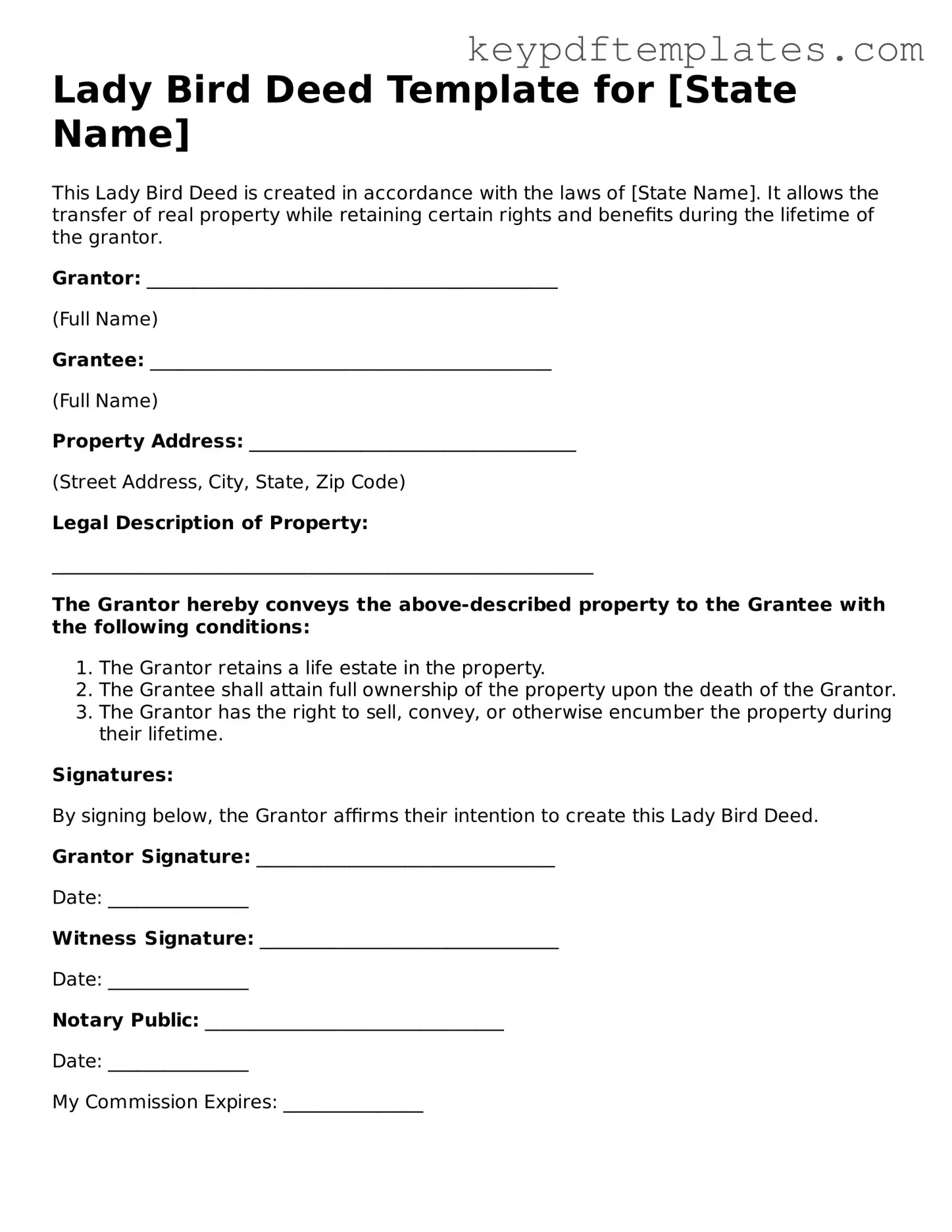Printable Lady Bird Deed Template
The Lady Bird Deed, also known as an enhanced life estate deed, allows property owners to transfer their real estate to beneficiaries while retaining control during their lifetime. This unique legal tool can help avoid probate and provide flexibility in estate planning. Understanding its benefits and implications is essential for anyone considering this option.
Modify Document Online
